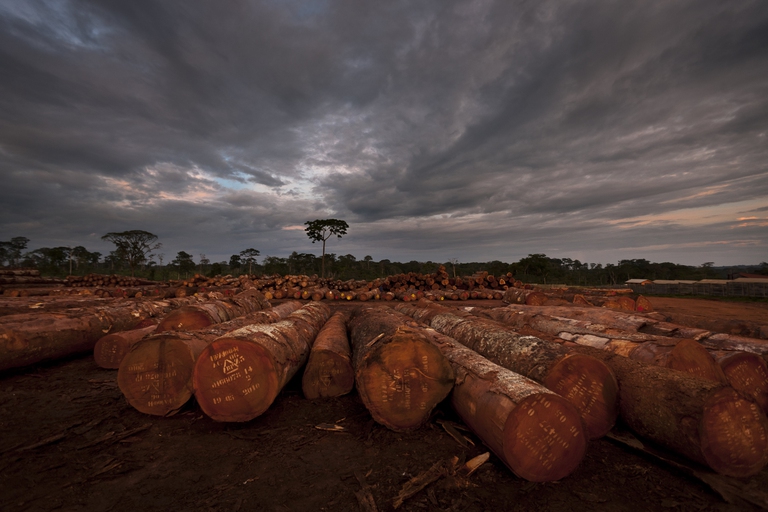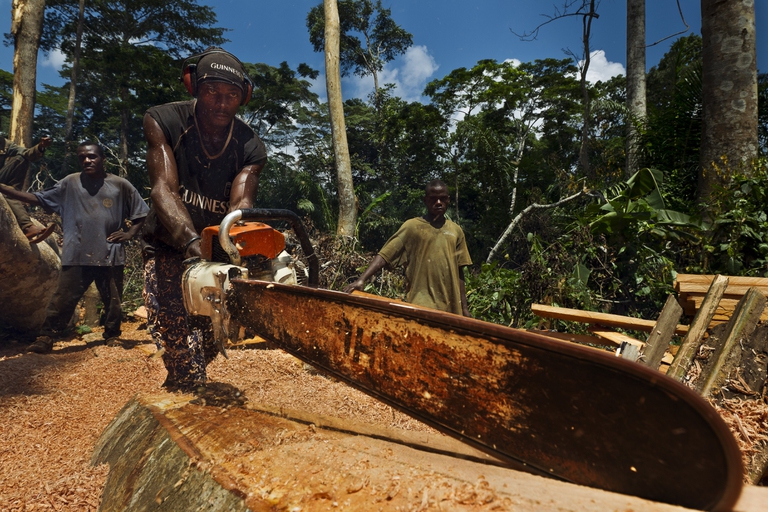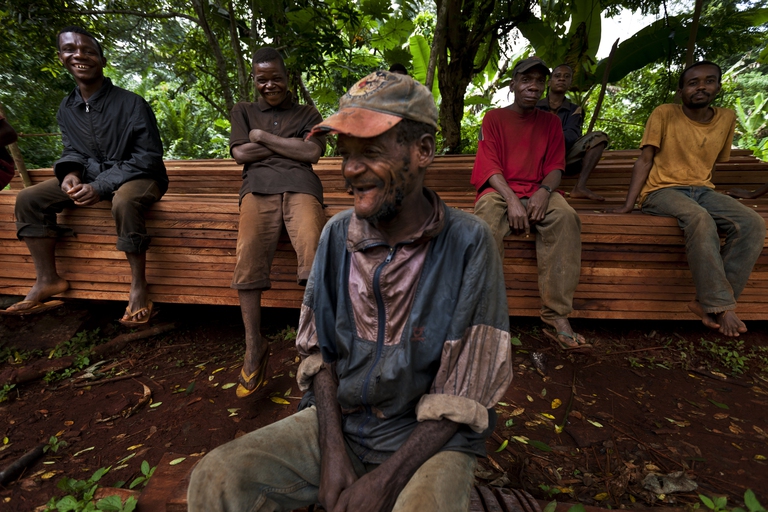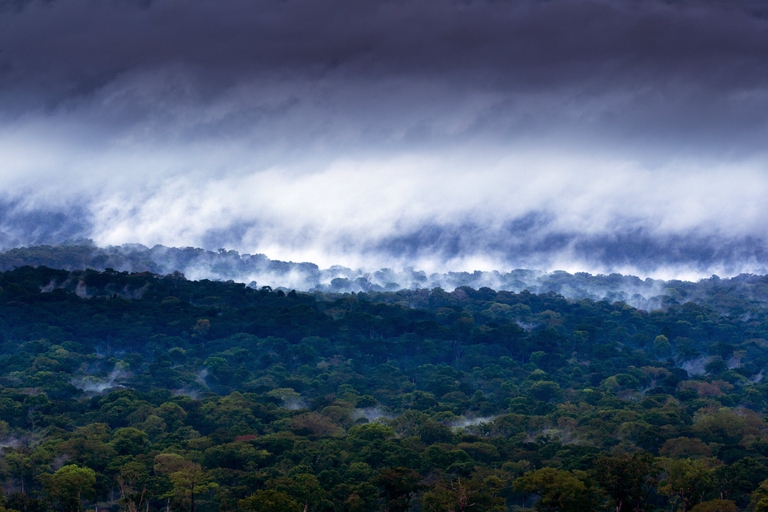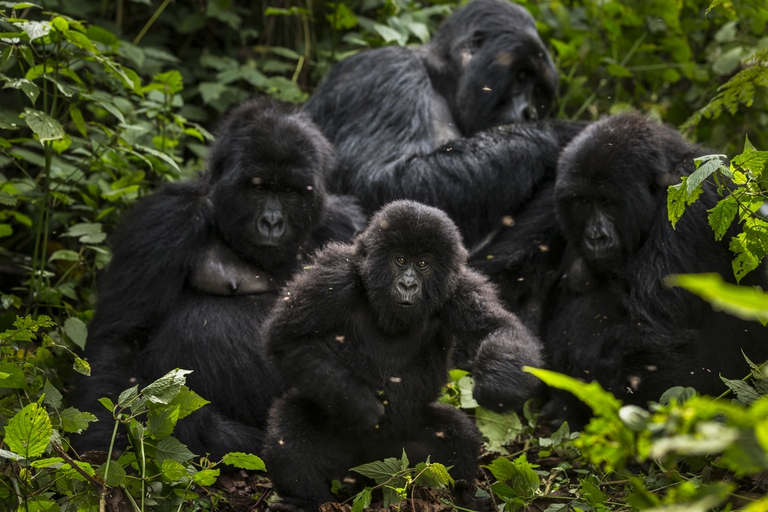
The Amazon became an alternative classroom during the pandemic. Now, the educational forest in Batraja, Bolivia, lives on to teach children and adults the value of nature.
The world’s second largest rainforest, in Central Africa’s Congo Basin, is disappearing at alarming rates due to severe deforestation. The underlying reasons are to be found widespread poverty in the region.
The Congo Basin, an area larger that the US state of Alaska that spans across six Central African countries, is home to the world’s second largest tropical rainforest after the Amazon. It risks being left in a fragmented and severely degraded state due to the growing threat of deforestation carried out to clear the way for small-holder cultivation and illegal logging, experts warn. If the current trends holds, it’s predicted that the entire forest will be gone by the end of the century.
The Congo Basin lost around 165,000 square kilometres of forest between 2000 and 2014, according to a study by the University of Maryland (UMD) published in the journal Science Advances. The research indicates that the Democratic Republic of Congo (DRC), which holds the largest share of the forest, 60 percent, is home to the largest deforested area. The dominant force behind rising logging activities in the country, driving more than 80 per cent of the region’s total forest loss, is largely down to clearing land for subsistence farming mostly by hand, using simple axes.
The dominance of small-scale deforestation of the Congo rainforest is largely to be attributed to widespread poverty, which has also led to political instability and conflict in the region. As well as the DRC, the rainforest is shared by Cameroon, the Central African Republic (CAR), Equatorial Guinea, the Republic of the Congo (RoC) and Gabon. The DRC is home to more people than the other five combined and, along with the CAR, has a human development index – calculated by combining data on life expectancy, mean of years of schooling and gross national income per capita – in the bottom 10 per cent in world rankings, therefore amongst the lowest in the world.
In addition, Central Africa has been plagued with acute levels of violence in the past two decades. Sadly, hundreds of thousands of refugees have moved through its forests, stripping vegetation and devastating wildlife populations. National parks like Virunga in the DRC, home to the endangered mountain gorilla, have been looted and park staffers slaughtered. Furthermore, the growing refugee camps bordering natural reserves have contributed to putting pressure on parklands.
Read more: Virunga National Park, six rangers killed while protecting gorillas
Given the few livelihood options in the area, most people survive by carving farmland out of the forest. Unfortunately, these plots are farmed until the soil runs complete dry of nutrients, whereupon a new area is cleared and planted, a practice known as “shifting cultivation”. The researchers looked for patterns signalling different types of deforestation in satellite data showing regional tree cover loss, seeking to investigate how much shifting cultivation and other forms of small-scale agriculture contribute to the region’s deforestation.
“It was important for us to explicitly quantify proportions of different drivers – Alexandra Tyukavina of UMD explains –, to demonstrate just how dominant the small-scale clearing of forests for shifting cultivation is within the region and to show that it’s not only re-clearing of secondary forests, but also expansion into primary forests”.
Tyukavina and her colleagues found that this contributed around 84 per cent of Congo Basin deforestation between 2000 and 2014. This number increased to 90 per cent when focussing specifically on the DRC and CAR. The only country where small-scale agriculture isn’t the principal cause of deforestation is Gabon, in which industrial selective logging is the main culprit. Though industrial agriculture contributed only 1 per cent to Congo deforestation during the study period, it is likely to rise, especially in coastal countries.
A recent report by the non-profit organisation Global Witness alleges that the DRC’s biggest timber company, Nord-Sud Timber, is illegally harvesting trees with impunity at nearly 90 per cent of its sites. Nord-Sud, which is Portuguese-owned, denies that its Congolese subsidiary, Sodefor, is breaching its contracts, saying that the accusations have no basis. It acknowledges that “some management plans aren’t in place” but states that it is working with the Environment Ministry on this front.
The Congo Basin is vital to the planet thanks to its carbon absorption function, or carbon sink, as well as supporting endangered wildlife such as gorillas and forest elephants. But logging could cause this natural wonder to disappear by the end of the century. Residents who live along the waters of the basin and rely on it for their livelihoods, up to 75 million people, complain that logging has already disrupted weather patterns. Presumably, it is time for us to start considering the conservation status of tropical timber like that of ivory, protecting it the way we would an endangered species.
Siamo anche su WhatsApp. Segui il canale ufficiale LifeGate per restare aggiornata, aggiornato sulle ultime notizie e sulle nostre attività.
![]()
Quest'opera è distribuita con Licenza Creative Commons Attribuzione - Non commerciale - Non opere derivate 4.0 Internazionale.
The Amazon became an alternative classroom during the pandemic. Now, the educational forest in Batraja, Bolivia, lives on to teach children and adults the value of nature.
Our species took its first steps in a world covered in trees. Today, forests offer us sustenance, shelter, and clean the air that we breathe.
Bangladesh suffered widespread damage as a result of Cyclone Amphan. Yet the Sundarbans mangrove forest acted as a natural barrier protecting the country from further destruction, as it has done countless times before.
On top of a 2.4 million dollar compensation, the indigenous Ashaninka people will receive an official apology from the companies who deforested their lands in the 1980s.
The tapir was reintroduced into Brazil’s Atlantic Forest, the country’s most at-risk ecosystem. The species can play a key role in the forest’s recovery.
Forests are home to 80 per cent of the world’s terrestrial biodiversity. This year’s International Day of Forests highlights the urgent changes needed to save them.
After a legal battle that lasted two years, Indonesia’s Supreme Court has revoked the permit to mine for coal in the forests of South Kalimantan in Borneo.
The list of human and animal victims of the Australia wildfires keeps growing – one species might already have gone extinct – as the smoke even reaches South America.
Areas where the FARC guerrilla used to hold power in Colombia have faced record deforestation. Farmers cut down trees, burn land and plant grass for cows. Because, “what else can we do for a living here in the Colombian Amazon”? An intimate report from the heart of the felled forest in Caquetá.


